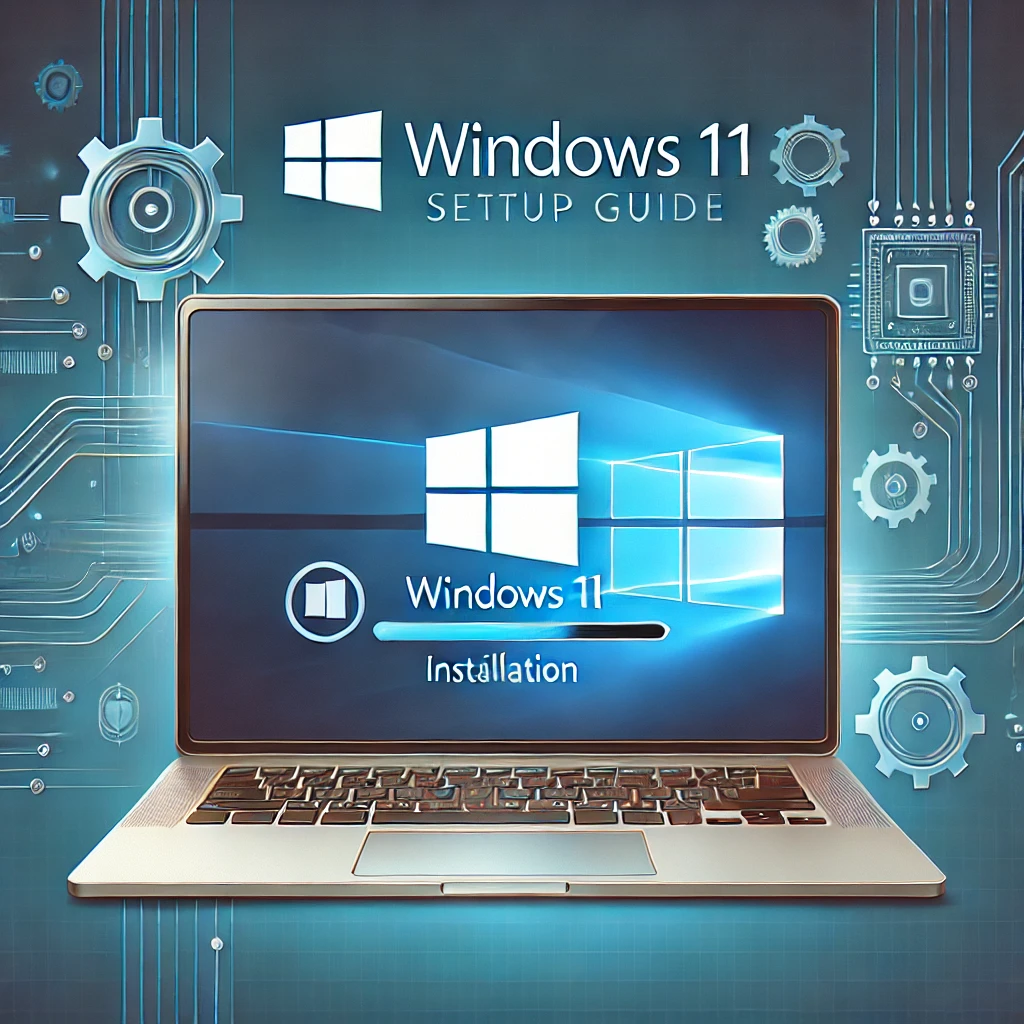
Windows 11 is the latest operating system from Microsoft, offering a sleek design, enhanced productivity features, and improved gaming performance. Whether you’re upgrading from Windows 10 or starting fresh, this guide will walk you through the process of setting up Windows 11.
1. Check Your System Requirements
Before setting up Windows 11, ensure your PC meets the minimum requirements:
- Processor: 1 GHz or faster with 2 or more cores, 64-bit processor.
- RAM: 4 GB or more.
- Storage: 64 GB or larger.
- Graphics Card: DirectX 12 compatible.
- Display: 720p resolution or higher.
- TPM (Trusted Platform Module): Version 2.0.
- Secure Boot: Enabled in BIOS.
Pro Tip: Download the PC Health Check tool from Microsoft to verify your system’s compatibility.
Download the PC Health Check Tool
2. Back Up Your Data
Before upgrading or performing a clean installation:
- Use an external drive or cloud storage (OneDrive, Google Drive, etc.) to back up important files.
- Make a backup of application settings and configurations.
3. Download Windows 11
You can install Windows 11 in three main ways:
Option 1: Upgrade via Windows Update
- Go to Settings > Update & Security > Windows Update.
- Click Check for Updates.
- If your device is eligible, you’ll see the Windows 11 update option. Select Download and Install.
Option 2: Use the Installation Assistant
- Download the Windows 11 Installation Assistant from the official Microsoft website.
Download Installation Assistant - Run the tool and follow the on-screen instructions.
Option 3: Create Installation Media
- Use the Media Creation Tool to create a bootable USB or ISO file.
- Follow the clean installation steps below for a fresh start.
4. Install Windows 11
Option 1: Upgrade Installation
This method retains your files and apps:
- Launch the Installation Assistant or update via Windows Update.
- Follow the on-screen instructions.
- Restart your PC when prompted.
Option 2: Clean Installation
This method wipes your data for a fresh setup:
- Insert your bootable USB or ISO file.
- Restart your PC and enter the BIOS/UEFI (usually by pressing F2, F10, F12, or DEL during boot).
- Set the USB drive as the first boot device.
- Save changes and reboot.
- Follow the installation prompts:
- Select language, time, and keyboard preferences.
- Click Install Now.
- Choose “I don’t have a product key” (if upgrading).
- Select Custom installation and pick the drive to install Windows 11.
5. Initial Setup
Once Windows 11 is installed:
- Sign In: Use your Microsoft account to sync settings, files, and apps across devices.
- Privacy Settings: Adjust location tracking, diagnostic data, and targeted ads.
- Personalize: Set up your desktop, theme, and wallpaper.
- Create a PIN: For quick and secure logins.
6. Install Drivers and Updates
- Update Windows: Go to Settings > Windows Update > Check for Updates.
- Install Drivers: Download drivers for your graphics card, Wi-Fi, and peripherals from the manufacturer’s website.
7. Install Essential Apps
- Web Browser: Install Chrome, Firefox, or Edge.
- Office Suite: Microsoft Office, Google Workspace, or LibreOffice.
- Media Players: VLC, Spotify, or Netflix.
- Antivirus: Windows Defender is built-in, but you can add others if needed.
8. Explore Windows 11 Features
- Snap Layouts: Organize multiple windows for multitasking.
- Widgets: Access news, weather, and personalized updates.
- Microsoft Teams Integration: Chat and call directly from the taskbar.
- Gaming Features: Enjoy AutoHDR, DirectStorage, and improved performance.
9. Troubleshooting Common Issues
- TPM or Secure Boot Error:
- Enable TPM and Secure Boot in BIOS.
- Not Enough Storage:
- Free up space by deleting unused files or apps.
- Driver Issues:
- Use Device Manager to update or roll back drivers.
10. Optimize Windows 11 for Better Performance
- Disable Startup Programs: Use Task Manager to speed up boot time.
- Enable Dark Mode: Save battery and reduce eye strain.
- Adjust Power Settings: Choose the High Performance plan for better speed.
Conclusion
Setting up Windows 11 is straightforward, whether you’re upgrading or starting fresh. With its modern design and improved features, Windows 11 is perfect for productivity, gaming, and everyday use. Follow this guide to ensure a smooth installation process.
Have questions or need further assistance? Let us know in the comments!
